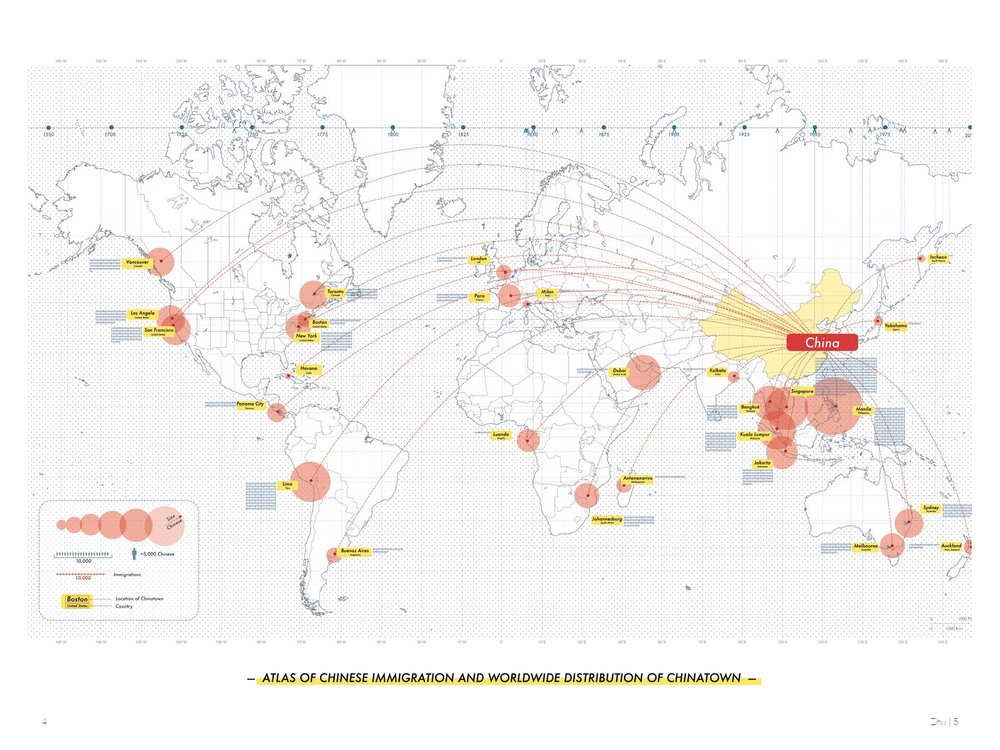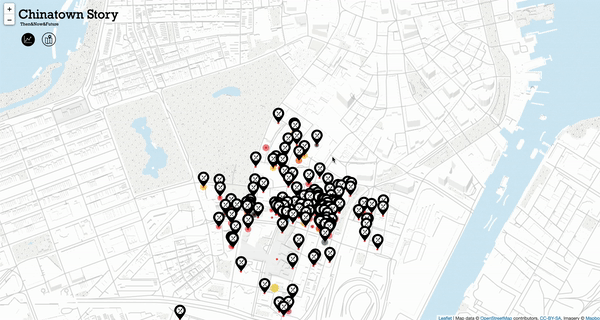
︎DESIGN
︎
Picture the Chinatown Gastronomy from a Cross-scale Perspective
#Web #Storytelling #Data Visualization
︎
PROJECT Chinatown Handbook
CLIENT Rentify Chinatown︎︎︎
YEAR 2020
ROLE Team Lead, Concept, all graphic, Illustration, design, developing(HTML/CSS/Javascript, d3.js)
COLLABORATOR Litao Yan, Kaihong Gao
Publication Chinatown Handbook
Github Link︎︎︎
LINK Chinatown Handbook︎︎︎
CHALLENGE
Help the initiative to figure out the current challenges and opportunities in Chinatown
POTENTIAL
An interactive narrative data storytelling about Chinatown history and current challenges it meets
Chinatown Story
‘‘Whenever we have a small home gathering,
we go to have Dim Sum, ‘said Brain Moy,
whose family has been served in China
Pearl, one of the oldest restaurant in Boston
Chinatown(Paula Ebben,2019), when he
was a little boy in a Chinese new year’s Eve.
This is the most significant time for every
Chinese to ensure a prosperous year ahead,
auspicious fare such as dumplings, hot pot,
fish and noodles will be served in thought
to bring good luck. However, this scene
becomes rarer now.
‘‘Whenever we have a small home gathering,
we go to have Dim Sum, ‘said Brain Moy,
whose family has been served in China
Pearl, one of the oldest restaurant in Boston
Chinatown(Paula Ebben,2019), when he
was a little boy in a Chinese new year’s Eve.
This is the most significant time for every
Chinese to ensure a prosperous year ahead,
auspicious fare such as dumplings, hot pot,
fish and noodles will be served in thought
to bring good luck. However, this scene
becomes rarer now.

In the recent years, Chinatown’s Asian
population in the eastern part of North
America has been rapidly declined because
of the surging housing prices, family-owned
restaurants and stores are shutting down,
leaving behind empty storefronts that are
pending to be replaced by boutiques and
fashion shops. According to a research from
Asian American Legal Defense and Education
Fund, from 2000 to 2010, the Asians living in
Chinatown has declined in a high rate, New
York is from 48% to 45%, Boston’s 57% to
46% and Philadelphia’s 49% to 30%, where
the ratio of white increased.

The high-end business including the clothing shops and restaurants are mainly concentrated on the edge of Chinatown. In the 1990 Master Plan, the limit of the height of buildings has been drafted, however, a flooding in massive luxury condominiums ignored the zoning and continued occupying some part of Chinatown, which make the housing strok continue rising, if there is no implements to restrict such change.
This Project is a part of study: Gastronomic Urbanism, read the article here︎︎︎
Co-create with Community
To better understand the need of people who will check this narrative, I did a co-creation workshop with communities to understanding their perspective towards Chinese food and Chinatown from their own hometowns.
![]()
To better understand the need of people who will check this narrative, I did a co-creation workshop with communities to understanding their perspective towards Chinese food and Chinatown from their own hometowns.

![]()
I did a community sharing, you can download materials here︎︎︎
Mapping out Chinatown
The purpose of the interactive map is to delivery the story we narrated through a more user-friendly way, the data visualization provide people the experience of looking at Chinatown from a food perspective.



︎
KEY TAKE-AWAY
NEXT STEPS
︎
KEY TAKE-AWAY
- Buildling community consensus is important in product development process
- Keep the message simple to deliver
- Technology could help delivery interactive experience
NEXT STEPS
- Create public Gastronomic book for Chinatown community in Boston
- Get feedback from Chinatown community
︎


